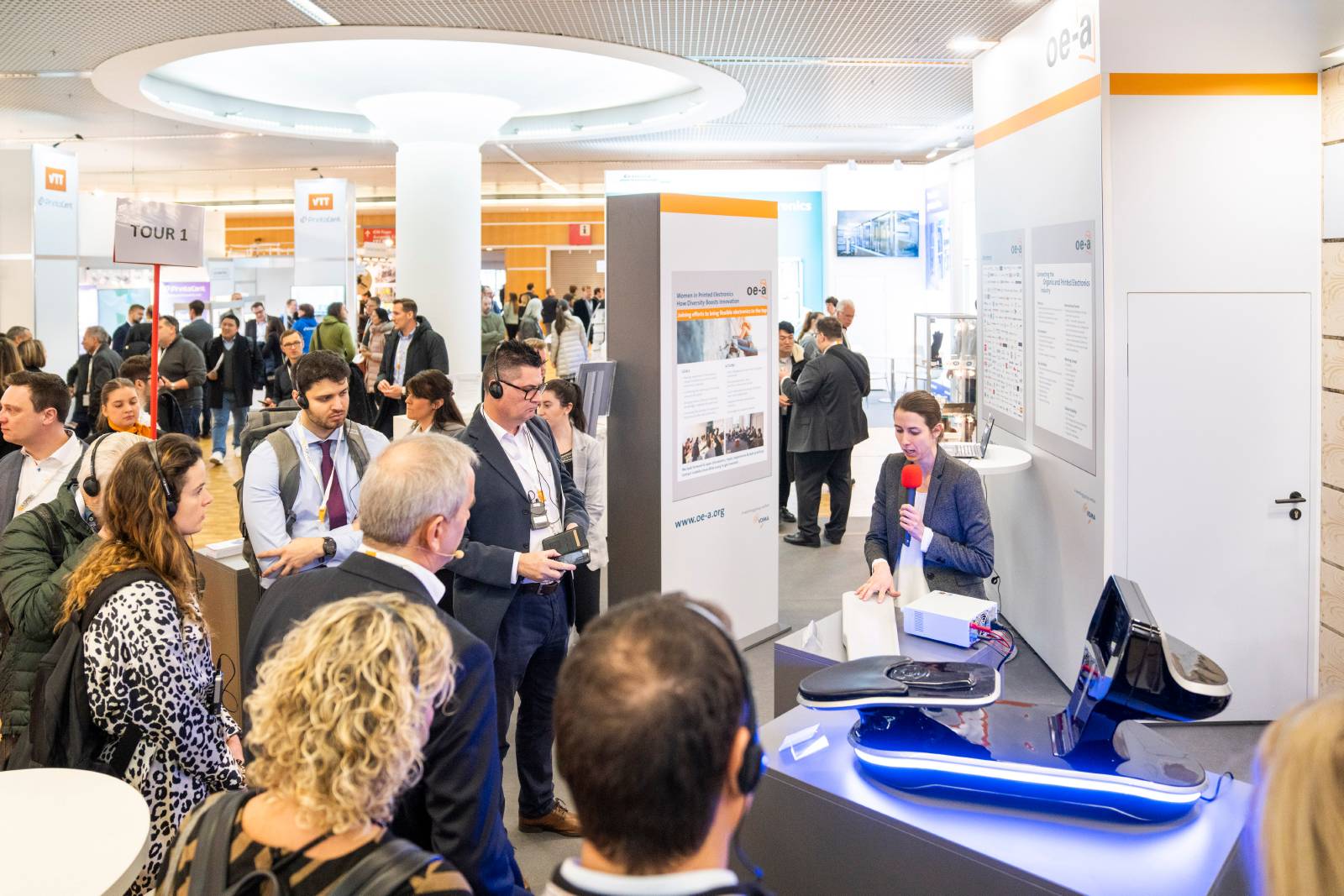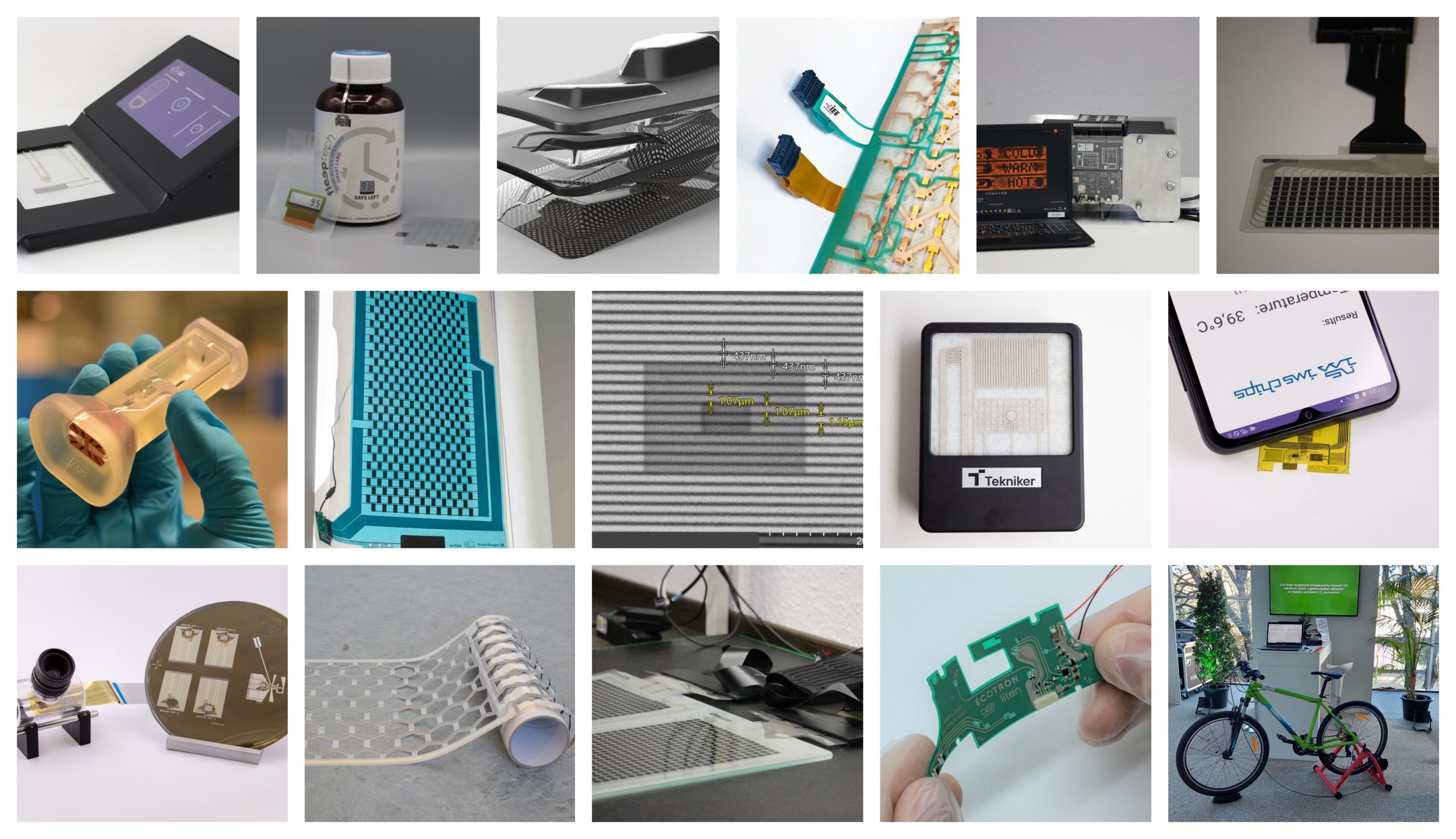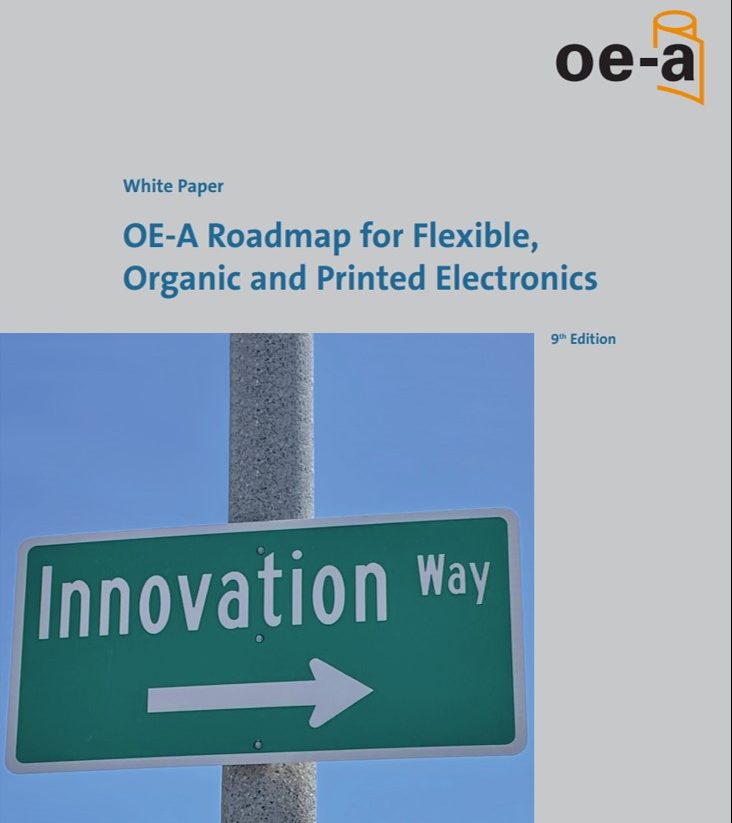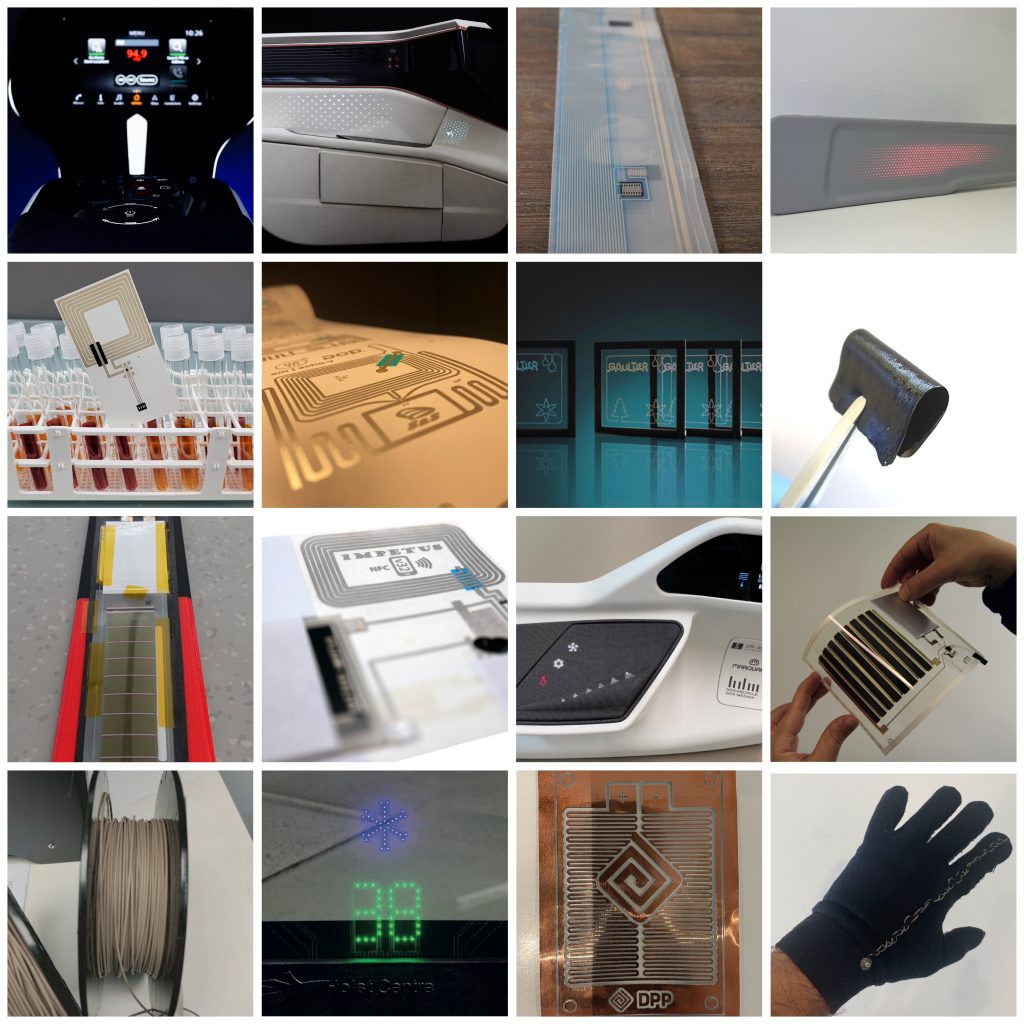Holst Centre, The Netherlands
This demonstrator showcases the possibility of quasi-transparent display that can be integrated in glass.
The MicroLED display by Holst Centre has ultra-fine electrical circuitry that is quasi-transparent, and the display elements are 130 micro LEDs of 200 x 300 um that are interconnected with printed adhesive on a printed Ag-grid.The device is built on a transparent PEN foil. In the OFF state, the display is see-through and quasi-transparent. In its ON state, the display elements (pixels) are visible, while the rest of the display is still quasi-transparent. This enables the viewer in front of the display to see both the displayed sign/message, as well as the background beyond the display. It shows a virtually undetectable lighting grid from certain distance.
Purpose
- Achieve a MicroLED bonding technology on a fully printed structure of micro-traces inside a glass panel
- Display functionality on low-cost polyesters, realized using printed electronics.
- Open up the possibility for display integration in automotive glass (front/rear/side wind shields) as well as in glass panels of buildings
Target Group
- Automotive
- Smart Buildings
Benefits
- This project is a key step towards showcasing display functionality on low- cost polyesters
- New application possibilities
- Display serves as a platform to integrate other functionalities such as printed heater
- Enhances safety aspects
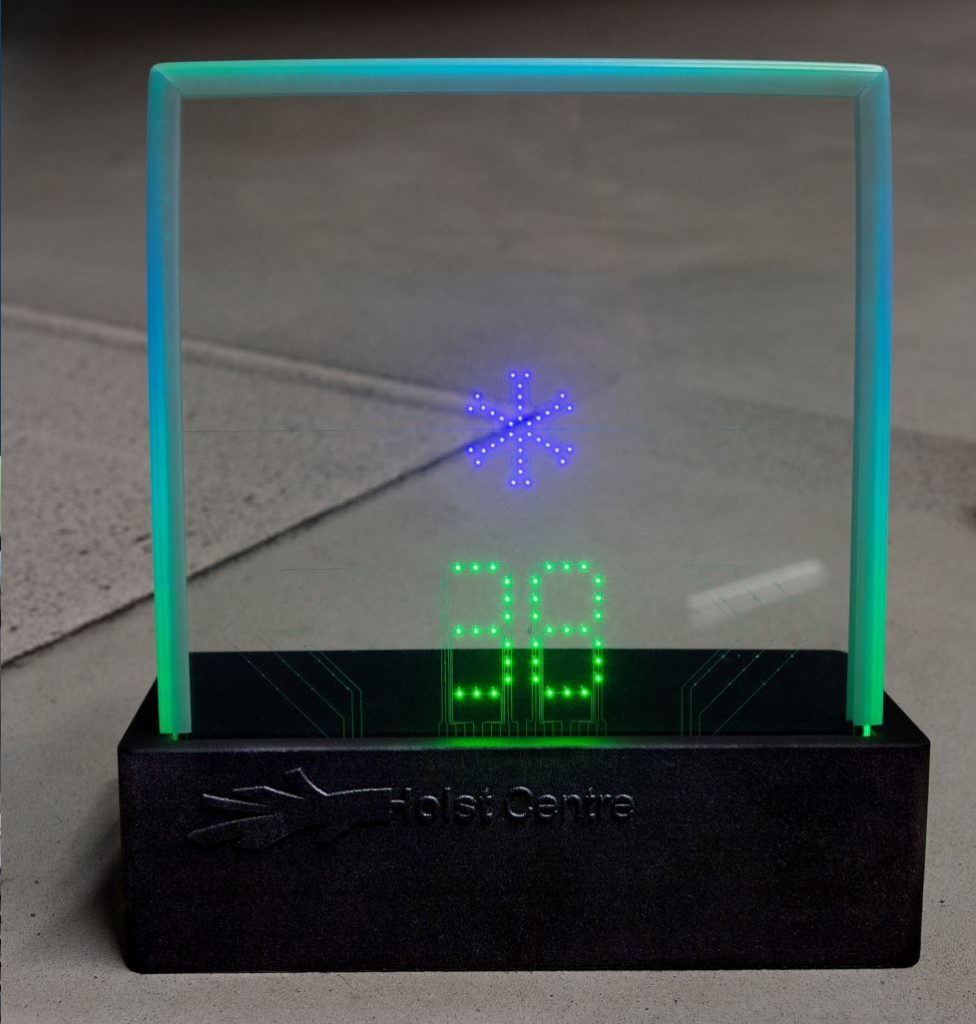


Printed Electronics Components
- Conductive path
- Printed adhesive
- Printed interconnection


